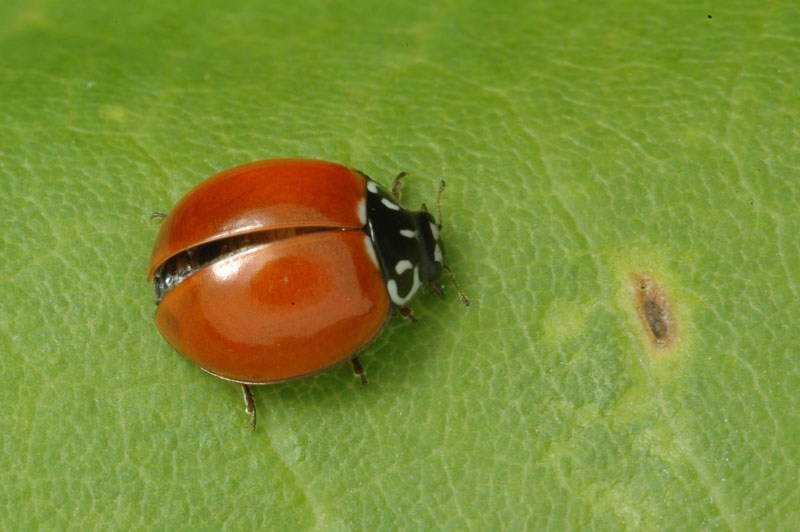On Monday the first Asiatic lilies poked out of the soil. By Tuesday morning there were already holes in the leaves. Tuesday afternoon, two red lily beetles were seen jigging on the inch-tall sprouts. It's not an exaggeration to say they were dancing, because when they mate, two red lily bugs appear to stand on their back legs and touch their front feelers together, as if they are holding hands. Perhaps they are marching to their own beat, but from here on in it's war!
I have about a dozen Asiatic lilies so managing these little red devils may be possible. At the St. Albert Botanic Park it's estimated there are more than 1,000 lilies. For the past four years, searching for beetles and killing them has been a monumental task that requires daily patrols by a small army of volunteers led by Joan Johnson.
"It's the larvae that eat the leaves. Once you know what to look for, which are the holes in the leaves, you can find them," said Joan Johnson, who agreed that the beetles appear to dance.
"When I see them, I kind of laugh and say, 'I know what you are up to!' Then I knock them into a pail of soapy water and kill them," she said.
One female lily beetle will produce up to 450 orange-red coloured eggs, which appear in a row on the underside of the leaves. If you pick off the eggs and squish them, they leave an orange/red stain on your sidewalk. No doubt when the beetles see their offspring squished, they utter their own version of, 'I know what you are up to!' and they hide.
Squishing tough-shelled beetles underfoot isn't easy. As you flatten one, you may hear a little squeal or cry from the creature. On the sidewalk orange lily-bug guts remain as a marker. You can spray the stains with a hose, but it takes scrubbing to erase all traces of the death you just orchestrated.
The beetles have a black underside and the cagey little fellows disappear quickly. Dig around in the soil and you may find the beetle as well as a squirming mess of larvae. It's tough, but nonetheless you must kill the babies if you hope to have lilies this summer.
Good bugs
The creatures may be killed with various poisons, but be careful, because you may kill other bugs that you hope to keep in the garden, like very similar-looking lady bugs.
"Lily beetles eat the lilies. Lady bugs eat aphids," explained University of Alberta professor John Acorn.
It's unlikely that birds will eat the beetles, Acorn said, because their red colour discourages them.
"They are bright red for a reason. They taste bad to the birds," Acorn said.
To make it easier to pick the beetles, Acorn suggests putting a light-coloured sheet under the lilies.
Some websites suggest putting coffee grounds next to the lilies, a method that seems to work for a few days. Then holes reappear in the leaves.
"We would like to think that the coffee interrupts the pheromones. The beetles may be confused by the smell. But there seem to be two types of beetles. Some are shy and hide. Others are in your face saying, 'Na-na-na' at you. They thumb their noses at you," said Laurie Hepper, president of the Alberta Regional Lily Society.
Like Johnson and Acorn, Hepper recommends the laborious job of picking beetles off the plants, but she is not against home remedies.
"Some people say that fine powder like flour or talcum powder gets in the beetles' tubes and plugs them up. I don't know if it works but I tell people to put the flour or fine powder on the leaves. It's odd looking, but better than having the lilies chewed to pieces," she said.
So there you have it: a lily bed with some chewed leaves supported by flour-dusted plants and stems and little red bugs on the ground dancing on your best bed sheet while enjoying a little coffee.
It may be easier to plant petunias.




